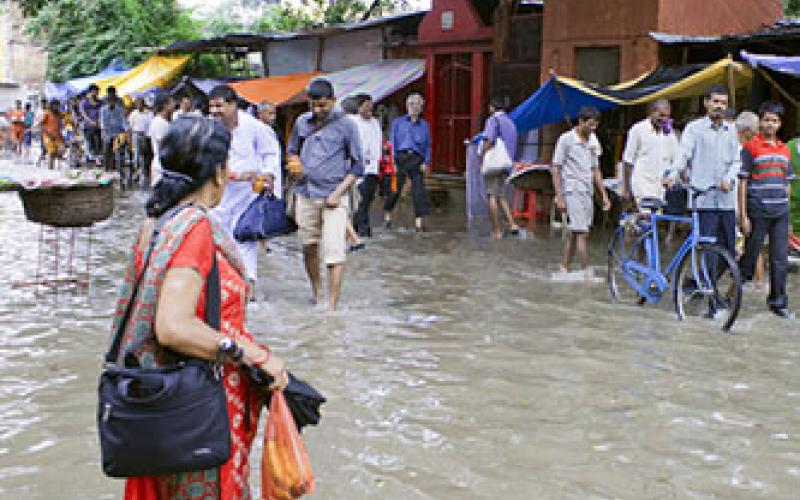New climate modeling projects weather extremes for India

New climate modeling projects weather extremes for India
Recent climate projections for India, based on the regional climate models, identify that India would face more days of extreme rains and more consecutive dry days – which would lead to more floods and more droughts, towards the end of the 21st century.
Original Paper:
Rao, K. K., S. K. Patwardhan, Ashwini Kulkarni, K. Kamala, S. S. Sabade, and Kumar, Krishna K. 2014. Projected changes in mean and extreme precipitation indices over India using PRECIS. Global and Planetary Change (Elsevire. 113 (Feb 2014) 77-90. DOI: http://dx.doi.org/10.1016/j.gloplacha.2013.12.006
Global warming induces climate variability, triggering changes in the frequency and intensity of extreme weather events in almost every country. In India, events such as floods, flash floods, heavy rains, drought, and cyclones are now common. Here, rainfall events are important for two critical reasons. First, India's agriculture is 60 percent dependent on rainfall for irrigation. And second, extreme events cause loss of life and damage to properties. Hence, there is an urgent need for Indian researchers, practitioners, and policymakers to address this profound threats of climate change variability.
A significant challenge in tackling this problem has been the failure of climate models to accurately predict extreme weather events. In the past, policymakers and practitioners in India have utilized "global climate models" (GCM) to project future climate change and devise policies in response. However, these models often fail to accurately simulate extreme weather rainfall events over smaller spatial extents due to their coarse resolution. Consequently they have failed to deliver projections accurate enough for policy formulation and program design.
Developed at the UK Meteorological Office's Hadley Centre — one of the foremost climate change research centers in Europe — RCMs provide climate projections down to a scale of 50 square kilometers; Generally, GCMs achieve projections at a 300-square-kilometer scale. The benefits of RCMs are akin to using the pinch zoom-in function on smart phone map applications, allowing users to visualize climate information with greater resolution.
To further improve accuracy, researchers used "ensemble mode" in which the same model is run numerous times using atmospheric information at the latitudinal and longitudinal scale for the time period running from 1961 to 2098. They then analyzed the group of selected model outputs to more accurately predict the rainfall. Overall, the researchers ran 17 simulations before ultimately selecting five model runs based on how accurately they matched earlier Indian monsoon seasons.
According to their findings, the number of heavy rainfall days will increase substantially towards the end of the 21st century. They also predicted an increase in number of dry days over central India, but a decrease in other parts. All in all, India would be facing more incidences of floods and droughts towards the end of the 21st century.




